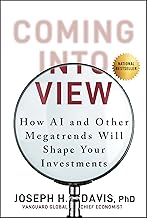Summary of "Making $100 Billion In 1 Day: The Unexpected Winner Of AI"
Summary of Key Financial Strategies, Market Analyses, and Business Trends
Larry Ellison’s $100 Billion Net Worth Jump
- Ellison’s net worth surged by $100 billion overnight, marking the largest single-day increase in history. This was driven by Oracle’s $300 billion contract with OpenAI.
- Oracle does not build AI models or chips but provides critical cloud infrastructure—such as data centers, power, cooling, and networking—for AI companies like OpenAI and Meta.
- Ellison owns 42% of Oracle, so the stock price surge had a significant impact on his personal wealth.
- The $300 billion deal is a Remaining Performance Obligation (RPO), representing future revenue over five years starting in 2027, not immediate cash.
Oracle’s Role in the AI Ecosystem
Oracle acts as a lucrative middleman by renting out cloud infrastructure necessary for AI training and operations:
- AI companies require massive computing power; Oracle is expected to provide about 4.5 gigawatts of power, equivalent to the output of two Hoover Dams.
- Despite being a legacy tech company and late to cloud computing, Oracle strategically pivoted to focus on AI workloads.
Market and Investment Trends in AI and Cloud
AI investment is accelerating rapidly:
- AI startups raised $44 billion in the first half of 2025, surpassing all of 2024.
- Goldman Sachs projects total AI investments to reach $200 billion.
- Morgan Stanley forecasts nearly $3 trillion in global spending on data centers through 2028, with $900 billion anticipated in 2028 alone.
- NVIDIA announced a $500 billion investment into AI “factories” (token production for AI), signaling that the sector is still in early growth stages.
Oracle’s Historical Cloud Strategy and Pivot
- Oracle was slow to adopt cloud computing, initially dismissing it as a fad (Ellison’s 2008 quote).
- AWS rapidly grew and dominated the cloud market, generating significant profits and a large customer base.
- Oracle launched its cloud offering late (2012) and lagged behind AWS in revenue and growth.
- Between 2014 and 2016, AWS revenue skyrocketed from $4.6 billion to $12.2 billion, while Oracle struggled.
- Ellison stepped down as CEO but became CTO and executive chairman, focusing on long-term technology strategy.
- Oracle invested over $5 billion in R&D, developing “Gen 2 Cloud” with a focus on “bare metal infrastructure” optimized for AI and performance-sensitive workloads.
- This infrastructure uses NVIDIA Tesla GPUs to support neural network AI training, anticipating the rise of large language models (LLMs).
- Oracle’s pivot allowed it to become a key cloud provider for AI, securing massive contracts like the one with OpenAI.
Risks and Realities of AI Integration and Valuations
- Despite huge investments and hype, most companies have not seen rapid revenue acceleration from AI integrations.
- Only about 5% of AI startups experience significant revenue jumps by focusing on specific pain points and smart partnerships.
- Large enterprises struggle to scale AI effectively, often treating it as plug-and-play, which leads to underwhelming results.
- Some companies (e.g., Klarna, IBM) have had to rehire after layoffs, highlighting the complexity of AI adoption.
- Financial expectations for AI are extremely high, with analysts suggesting top tech firms need to generate an extra $600 billion in yearly revenue from AI alone—comparable to Walmart’s entire revenue.
- Even AI leaders like Sam Altman acknowledge investor overexcitement in the sector.
Overall Market Outlook
- AI is a paradox: potentially overvalued today, yet still only a fraction of its future worth.
- Oracle’s strategic pivot to cloud infrastructure for AI has positioned it as a major, though somewhat hidden, winner in the AI boom.
- Other legacy tech companies like Intel face difficulties, with government bailouts highlighting their struggles.
Methodology: Step-by-Step Strategic Pivot by Oracle
- Initially dismiss cloud computing as a fad (2008).
- Observe AWS’s rapid growth and profitability in cloud (post-2009).
- Launch Oracle Cloud (2012), but lag behind competitors.
- Leadership change: Ellison steps down as CEO, becomes CTO and executive chairman (mid-2010s).
- Invest heavily in R&D ($5 billion+) focused on cloud infrastructure optimized for AI.
- Develop and launch “Gen 2 Cloud” with bare metal infrastructure and NVIDIA GPUs (2018).
- Target AI and performance-sensitive workloads rather than general-purpose cloud.
- Secure large-scale contracts with AI leaders (OpenAI, Meta) for cloud services.
- Benefit from equity ownership as Oracle’s stock surges on AI deal announcements.
Category
Business and Finance
Share this summary
Featured Products

Launch Your First AI Business in 20 Days: From Idea to Income: The 20-Day Blueprint to Start an AI-Powered Online Business from Scratch
View on Amazon


